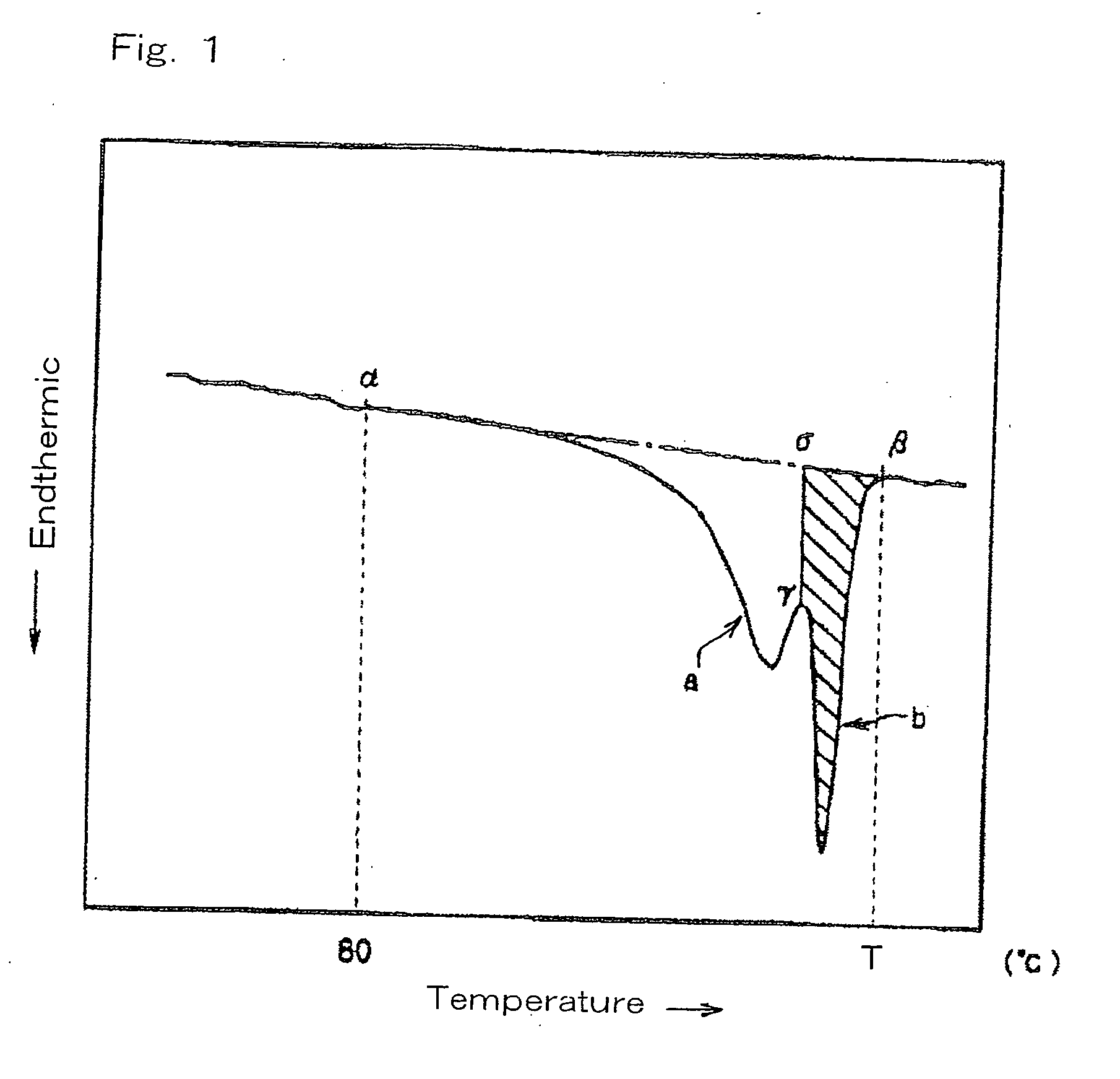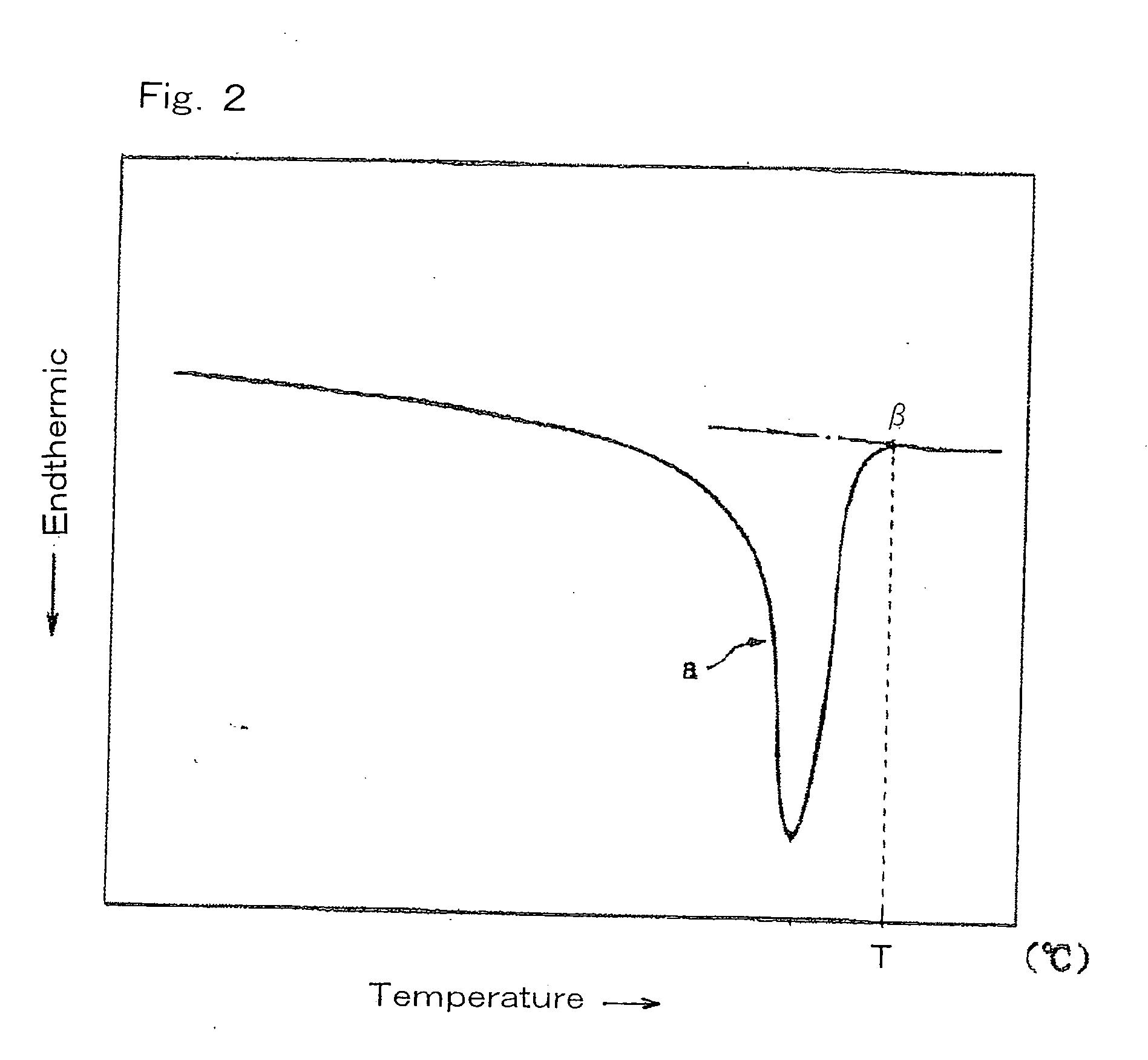Foamed polyolefin resin beads
- Summary
- Abstract
- Description
- Claims
- Application Information
AI Technical Summary
Benefits of technology
Problems solved by technology
Method used
Image
Examples
examples
[0119]Crystalline polyolefins used in Examples and Comparative examples are shown in the following Table 1.
TABLE 1ComonomerMFR*MeltingAbbrevi-amountsg / 10pointationcatalystsBased resinscomonomers% by weightmin(° C.)Resin 1Metallocene typePropylene-ethyleneEthylene0.59.0142random copolymerResin 2Ziegler Natta typePropylene-ethyleneEthylene2.77.0142random copolymerResin 3Ziegler Natta typePropylene-ethyleneEthylene1.08.0155random copolymerResin 4Ziegler Natta typePropylene homopolymer——5.0162Resin AMetallocene typePropylene-ethyleneEthylene2.87.0125random copolymerResin BZiegler Natta typePropylene-ethyleneEthylene1.67.0135random copolymerResin CMetallocene typeLinear low density——2.0100polyethylene*MFR means a melt mass-flow rate measured by a test method A based on JIS K 7210 (1999).MRFs of the resins 1 to 4 as well as the resins A and B are values measured under conditions of a test temperature of 230° C. and a load of 2.16 kg.MFR of the resin C is a value measured under conditions ...
PUM
| Property | Measurement | Unit |
|---|---|---|
| Temperature | aaaaa | aaaaa |
| Temperature | aaaaa | aaaaa |
| Temperature | aaaaa | aaaaa |
Abstract
Description
Claims
Application Information
 Login to View More
Login to View More - R&D
- Intellectual Property
- Life Sciences
- Materials
- Tech Scout
- Unparalleled Data Quality
- Higher Quality Content
- 60% Fewer Hallucinations
Browse by: Latest US Patents, China's latest patents, Technical Efficacy Thesaurus, Application Domain, Technology Topic, Popular Technical Reports.
© 2025 PatSnap. All rights reserved.Legal|Privacy policy|Modern Slavery Act Transparency Statement|Sitemap|About US| Contact US: help@patsnap.com


